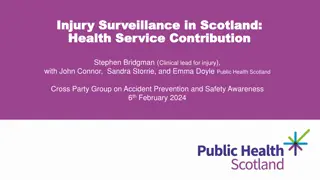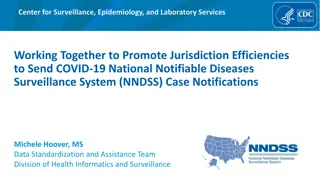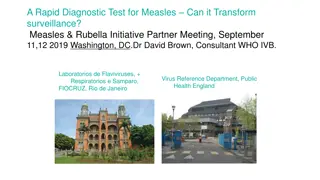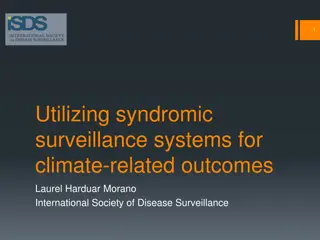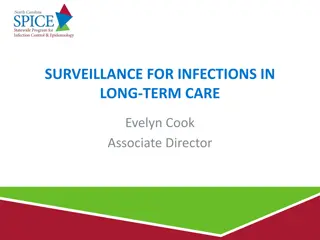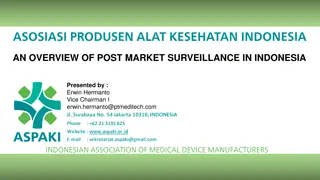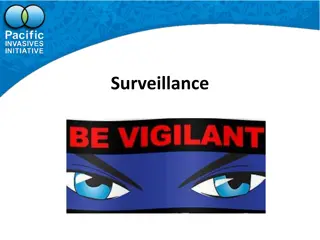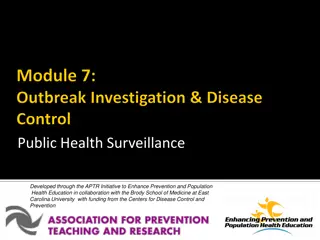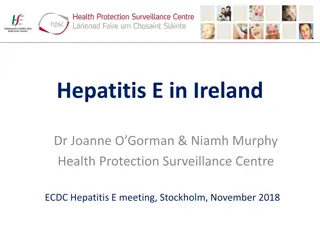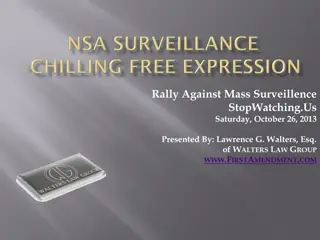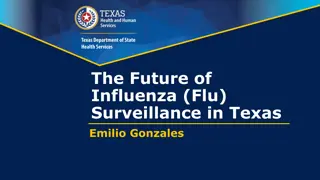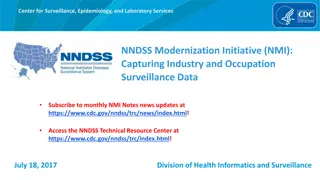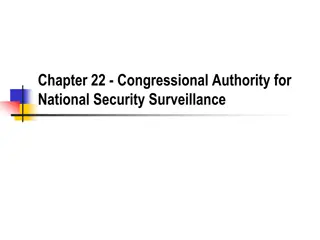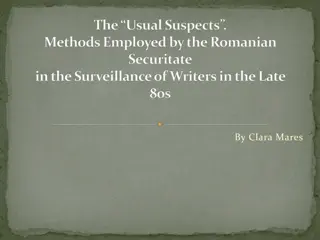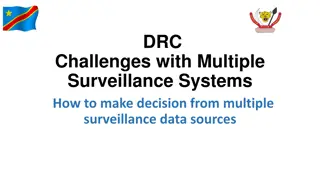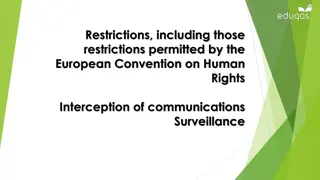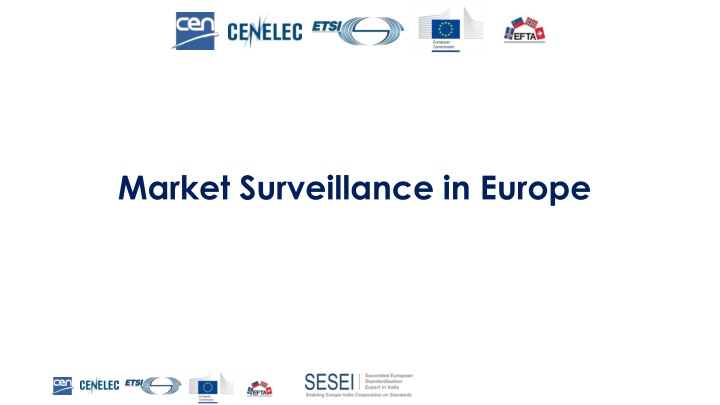
Market Surveillance in Europe
Market surveillance in Europe involves enforcing safety requirements, coordinating with customs, and ensuring fair competition. Legislation and regulations play a crucial role in monitoring and improving market practices.
Download Presentation

Please find below an Image/Link to download the presentation.
The content on the website is provided AS IS for your information and personal use only. It may not be sold, licensed, or shared on other websites without obtaining consent from the author. If you encounter any issues during the download, it is possible that the publisher has removed the file from their server.
You are allowed to download the files provided on this website for personal or commercial use, subject to the condition that they are used lawfully. All files are the property of their respective owners.
The content on the website is provided AS IS for your information and personal use only. It may not be sold, licensed, or shared on other websites without obtaining consent from the author.
E N D
Presentation Transcript
What is Market Surveillance Market surveillance involves checking whether products meet the applicable safety requirements. If they do not, it involves taking the necessary steps to ensure requirements are met, or imposing penalties. In the EU, market surveillance authorities (MSAs) in each country are responsible for controlling products and for taking the appropriate measures. MSAs cooperate closely with customs, which play a major role in protecting consumers from any imported unsafe products coming from outside the EU. European Commission finances coordinated activities between Member States MSAs to exchange best practices on market surveillance on the single market. Monitoring markets is not just crucial for protecting people from dangerous products but also for ensuring a level playing field for businesses.
Legislation in force Regulation (EC) 765/2008 sets out the requirements for accreditation and market surveillance relating to the marketing of products. The Regulation: sets out clear obligations for EU countries to carry out market surveillance and to prohibit or restrict the marketing of dangerous or non-compliant products provides MSAs the powers to obtain all necessary documentation from manufacturers to evaluate product conformity, to enter manufacturers' premises and take samples for testing, and in extreme cases to destroy products Includes clear obligations for EU countries to ensure cooperation at national and international level. Decision 768/2008/EC on a common framework for the marketing of products contains provisions on market surveillance, obligations of businesses, traceability and safeguard mechanisms. These provisions are being incorporated in sector specific legislation. Directive 2001/95/EC (the General Product Safety Directive) contains additional market surveillance provisions, notably for non-harmonised consumer products.
New regulation on MS and compliance of products In June 2019 Regulation (EU) 2019/1020 on market surveillance and compliance of products was published, aiming at improving and modernising market surveillance. It will apply to 70 regulations and directives that harmonise at EU level requirements on non-food products to protect consumers, health and safety, environment and other public interests It will replace Regulation (EC) 765/2008 as from 16 July 2021, and will improve them in particular by preventing non-compliance by providing information to businesses Single Digital Gateway: product requirements and obligations derived from EU legislation National Product Contact Points: information on national transposition and implementation joint activities with businesses Raising awareness, providing guidance Identifying non-compliance: results of joint activities may be used for investigations
Continue In order to facilitate administrative assistance and cooperation, Member States should also appoint a single liaison office. National market surveillance strategies Every 4 years considering all sectors set priorities Powers Updated set of powers, particularly to deal with online sales (use cover identity, require removal of online content) Risk-based approach and measures Targetting products more likely to be non-compliant Requiring economic operators to correct, otherwise restrictive measures improved cooperation: between EU countries, between market surveillance and customs authorities, and through an EU product compliance network
Market surveillance of products sold online In July 2017, Commission issued guidelines to help national MSAs better control products sold online. These guidelines clarify that: any product sold online in EU has to comply with EU product legislation, even if the producer is based outside the EU obligations of online marketplaces when authorities require them to remove dangerous products through the 'notice and action procedure', as defined in the e-Commerce Directive the responsibility of all actors in the supply chain, including fulfilment service providers who receive the order, package and send the product.
Exchange of Information Effective cross-border cooperation between MSAs in different EU countries is essential to ensure efficient, comprehensive, and consistent market surveillance. tools for the pooling of information and cooperation at EU level: Rapid Information System (RAPEX) - facilitates the rapid exchange of information among EU countries and European Commission. Information and Communication System on Market Surveillance (ICSMS) for information exchange will include best practices, results of joint actions, details of non-compliant products and information on national market surveillance programmes. Safeguard procedures - which obliges EU countries to communicate any measures they take which restrict the free movement of a product because it presents a risk or is otherwise non-compliant. Administrative Co-operation Groups (AdCos) - Commission facilitates discussions within AdCos composed of market surveillance experts. The purpose is to share information and cooperate on practical matters related to the implementation of EU laws. Financing of joint actions Commission finances MS activities jointly carried out by national authorities. Regular contacts and policy discussions with national representatives in the Expert Group on the Internal Market for Products Click here for the guidance on cross-border cooperation among EU MSAs
Risk Assessment In EU, MSAs has to carry out a risk assessment (as part of the compliance assessment) as soon as a noncompliant product representing a risk to the health or safety of persons or to other aspects of public interest protection is identified. EU general risk assessment methodology implements Article 20 of Regulation (EC) 765/2008 and intended to assist MSAs when they assess the compliance of products that are subject to Union harmonization legislation. It builds on the RAPEX Guidelines, developed within the framework of Directive on General Product Safety (GPSD) and extends them in two respects: to make sure that broader categories of public risk protected under EU harmonization legislation can be taken into account; to reflect the specific legal requirements on harmonised products. For more details, please click here
Main Challenges Several factors affect MSAs ability to check whether products made available in the EU are manufactured according to EU law: Supply chains may be very complex and encompass several countries. Economic operators may be located in a country different to those in which products are made available. Often, they are located outside the EU. Consumers may purchase products through the internet.
Best Practice: Market Surveillance of vehicle emissions On January 27, 2016, EC proposed a new motor vehicle type-approval framework that among other improvements requires EU member states to establish market surveillance programs. Four elements that pertain to market surveillance with the aim of strengthening the EU s in-use vehicle compliance program: Require EU member states to perform market surveillance testing of vehicles Grant EU member states the authority to take measures against noncompliant vehicles sold in their own markets Create an EU wide advisory body called the Forum for Exchange of Information on Enforcement Require the EU member states to establish a national fee levied on the manufacturers that would cover the costs of market surveillance activities For more information please click here
Dinesh Chand Sharma (Seconded European Standardization Expert in India) Director Standardization & Public Policy SESEI C/O EBTC, DLTA Complex, Gate No 3, 1st Floor, 1, Africa Avenue, New Delhi 110029 Mobile: +91 9810079461, Tel: +91 11 3352 1525, dinesh.chand.sharma@sesei.eu www.sesei.eu www.sesei.in

